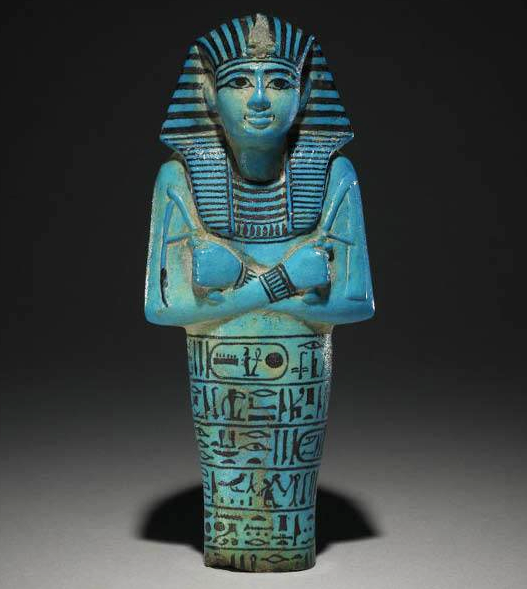Pharaoh: King of Ancient Egypt at the Cleveland Museum of Art
By Christopher Alexander Gellert for love, -j.
As a boy, I wandered galleries lined with elaborate
unearthed coffins -- dollhouse versions of chattel (human and material) to haul
with you to the afterlife, the rows of stiff humorless shirtless martinets mid-stride,
bedecked in serpentine headdress. I did not radiate the fascination of some of
my schoolfellows.
Picking my way through the Cleveland Museum of Art’s new
exhibition, Pharaoh: King of Ancient Egypt, I felt like one of the cats on
display: stony, indifferent, curious. Yet as I slinked through the galleries I surprised myself in wonder.
The show, organized with the British Museum and currently on
display through June 12, contains admirable works of great beauty and remarkable
craftsmanship. Seeing them through my adult eyes gave me a new understanding of my childhood
disenchantment. One cannot escape that in this exhibition every great piece of sculpture,
every fantastic monument, was built in the god-cult of a tyrant. The pharaoh's court, his pretended divinity, was the lodestone to Egyptian belief. We might remember
that Egypt’s great monuments were immense mausoleums -- the entire culture revolved
around a seemingly morbid fascination with life after death, and little concern
for this one. It’s at these kinds of thoughts that one sympathizes with
Mohammed crashing every idol in Mecca to pieces. But this impulse precludes us
from enjoyment and appreciation of works of great power – we need not embrace
them. And all of these same objections might be leveled with equal justice at
Christian art.
And yet, we cannot approach art -- even ancient art -- as
neutral apolitical relics. If art is an expression of culture, it will reflect
the political and social realities of that culture. It’s not for nothing that
the curators chose the title, Pharaoh: King of Ancient Egypt -- art in Egypt was pharaonic
Art. Each of the 10 galleries is organized around a different aspect of court
life and political theater. It reminds us that this art was used to enforce the
political order, and instill faith and obedience.
The enforcement of
eternal order has its parallel in the rigid orthodoxy of style. If so much of
Egyptian art looks the same, we shouldn’t be surprised -- the Kingdom of Heaven
is after all immutable, and if the face of the gods were to change that might
implicitly provoke questions that were better not asked. (Though, with the advent
of the Middle Kingdom the veneer had begun to crack under political
instability, and fissures are observed in the art -- by the New Kingdom you
encounter a degree of fluidity that would have been unthinkable in the old.) And
from the doggerel tone individual pieces break out and astonish, and by very
dint of their nature -- cracked, chipped and looted fragments -- they are
incapable of fulfilling their initial purpose as propaganda, disarmed in carefully
labeled glass vitrines. History has denuded them of their political import, and
frees us to enjoy them as aesthetic objects, even if the shadow of their past
hangs over them.
The massive Hathor capital that greets the visitor at the
beginning of the exhibition speaks to us in the vulnerability etched across its
face, its broken nose and bovine ears, full eyes -- its missing body, and yet
even maimed it conjures awe at the civilization that erected it.
It is a loss I do not mourn, and yet I still cherish these
shards.
Pharaoh: King of Ancient Egypt haunts
us through June 12. An accompanying photography show (through May
24th) in the contemporary galleries peeks at the leporine
reproduction of images of Ancient Egypt, its suffusion into our culture.
Photos courtesy of Christopher Alexander Gellert and the Cleveland Museum of Art.



